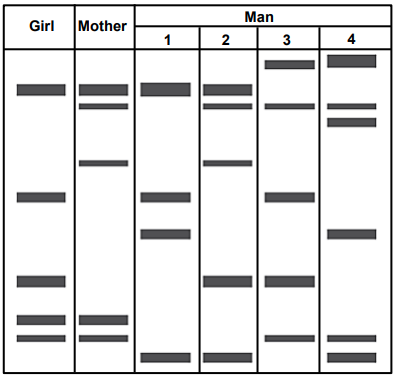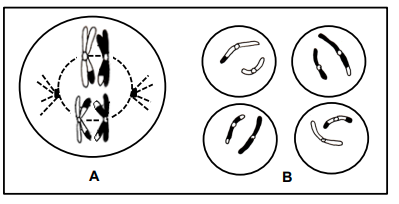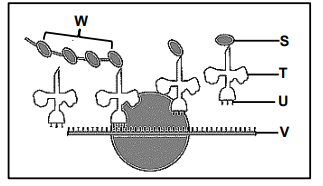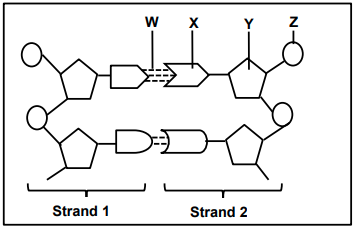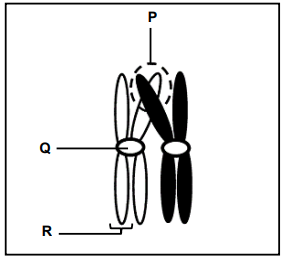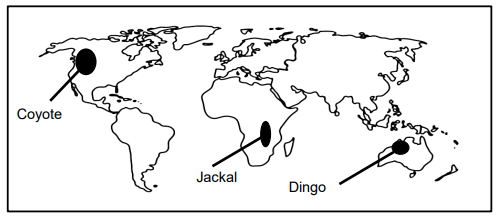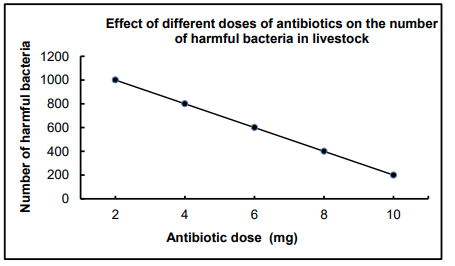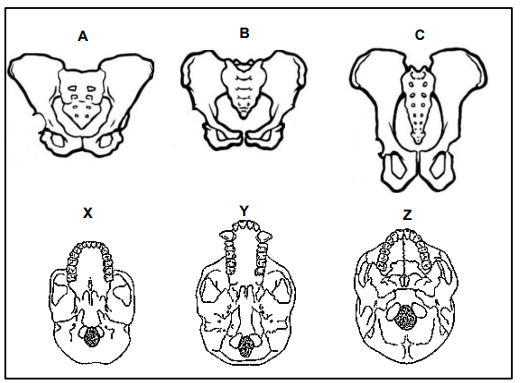LIFE SCIENCES PAPER 2 GRADE 12 QUESTIONS - NSC PAST PAPERS AND MEMOS NOVEMBER 2021
Share via Whatsapp Join our WhatsApp Group Join our Telegram GroupLIFE SCIENCES P2
NOVEMBER 2021
NATIONAL
SENIOR CERTIFICATE
GRADE 12
INSTRUCTIONS AND INFORMATION
Read the following instructions carefully before answering the questions.
- Answer ALL the questions.
- Write ALL the answers in the ANSWER BOOK.
- Start the answers to EACH question at the top of a NEW page.
- Number the answers correctly according to the numbering system used in this question paper.
- Present your answers according to the instructions of each question.
- Do ALL drawings in pencil and label them in blue or black ink.
- Draw diagrams, tables or flow charts only when asked to do so.
- The diagrams in this question paper are NOT necessarily drawn to scale.
- Do NOT use graph paper.
- You must use a non-programmable calculator, protractor and a compass, where necessary.
- Write neatly and legibly.
SECTION A
QUESTION 1
1.1 Various options are provided as possible answers to the following questions. Choose the answer and write only the letter (A to D) next to the question numbers (1.1.1 to 1.1.9) in the ANSWER BOOK, e.g. 1.1.10 D.
1.1.1 DNA and RNA are examples of …
- amino acids.
- enzymes.
- nucleic acids.
- proteins.
1.1.2 Which ONE of the following is a product of meiosis?
- Muscle cell
- Ovary
- Nerve cell
- Ovum
1.1.3 An individual is heterozygous for a harmful recessive allele but is unaffected by it.
Which ONE of the following best represents the genetic composition of this individual?
- Two dominant normal alleles
- One harmful recessive allele and one harmful dominant allele
- One harmful recessive allele and one normal dominant allele
- One harmful dominant allele and one normal recessive allele
1.1.4 A person has the genotype IAi for blood type.
What is this person's blood group?
- A
- B
- O
- AB
1.1.5 In a car accident, the biological father of a girl and three other men were killed. The men could not be identified due to their injuries.
DNA profiling was used to identify the girl's father.
The diagram below shows the DNA profiles of the girl, her mother and the four men.
Which ONE of the men is most likely to have been the father of the girl?
- 4
- 3
- 2
- 1
1.1.6 A DNA template strand codes for the amino acid serine with any of the following base triplets:
AGA AGG AGT TCA TCG AGC
The anticodon that codes for the amino acid serine is …
- AGT.
- UGA.
- TCG.
- UCG.
1.1.7 The diagram below represents two phases of meiosis. Which ONE of the following represents the correct sequence of
phases between phase A and phase B?
- Anaphase I, Metaphase I, Prophase II and Telophase II
- Metaphase I, Telophase I, Prophase II and Metaphase II
- Anaphase I, Telophase I, Prophase II, Metaphase II and Anaphase II
- Prophase I, Telophase I, Prophase II, Metaphase II and Telophase II
1.1.8 The diagram below represents a process that occurs during protein synthesis.
Which ONE of the following is CORRECT?
- S represents an anticodon
- W represents mRNA
- T represents tRNA
- U represents an amino acid
1.1.9 Evidence of hominid cultural evolution can be found in the fossil record.
This evidence would include the …
- position of the attachment of the spine to the head.
- length of the upper limbs compared to the length of the lower limbs.
- number of teeth present in the skull.
- presence of stone tools. (9 x 2)
(18)
1.2 Give the correct biological term for each of the following descriptions. Write only the term next to the question numbers (1.2.1 to 1.2.6) in the ANSWER BOOK.
1.2.1 A diagrammatic representation showing possible evolutionary relationships between different species
1.2.2 The type of bond found between amino acids
1.2.3 The theory that describes evolution as consisting of long periods of little/no change alternating with short periods of rapid change
1.2.4 Similar structures that perform different functions in different organisms
1.2.5 The breeding of plants and animals by humans for desired characteristics
1.2.6 The type of dominance where both alleles of a gene are expressed in the phenotype in the heterozygous condition (6 x 1) (6)
1.3 Indicate whether each of the statements in COLUMN I apply to A ONLY, B ONLY, BOTH A AND B or NONE of the items in COLUMN II. Write A only, B only, both A and B, or none next to the question number (1.3.1 to 1.3.3) in the ANSWER BOOK.
| COLUMN I | COLUMN II |
| 1.3.1 Mechanisms of reproductive isolation | A: Species-specific courtship behaviour B: Breeding at different times of the year |
| 1.3.2 Fossils found in South Africa | A: Little Foot B: Taung Child |
| 1.3.3 Proposed the 'law' of use and disuse' | A: Eldredge B: Gould |
(3 x 2) (6)
1.4 The diagram below represents part of a DNA molecule.
1.4.1 Identify the:
- Molecule X (1)
- Sugar at Y (1)
- Bond W (1)
1.4.2 Give the collective name of parts X, Y and Z. (1)
1.4.3 State the natural shape of the DNA molecule. (1)
1.4.4 Name the process whereby DNA makes a copy of itself. (1)
1.4.5 Name TWO places in an animal cell where DNA is located. (2)
(8)
1.5 The diagram below represents a chromosome pair undergoing a process during meiosis.
1.5.1 Name the:
- Organ in the human male where meiosis occurs (1)
- Process represented in the diagram (1)
1.5.2 Label:
- Area P (1)
- Structure Q (1)
- Structure R (1)
1.6 In humans, short fingers (F) and a widow's peak (H) are dominant over long fingers and continuous hairline. A man and a woman, both heterozygous for the two characteristics, plan on having a child.
The table below shows the possible genotypes of the offspring.
| Gametes | FH | Fh | fH | fh |
| FH | FFHH | FFHh | FfHH | FfHh |
| Fh | FFHh | FFhh | FfHh | Ffhh |
| fH | FfHH | FfHh | ffHH | Z |
| fh | FfHh | Ffhh | ffHh | ffhh |
1.6.1 State the genotype at Z. (1)
1.6.2 Give the:
- Genotype of the parents (2)
- Number of genotypes that could result in offspring with short fingers and a continuous hairline (1)
- Allele for a continuous hairline (1)
- Phenotype of a child who is homozygous recessive for both characteristics (2)
TOTAL SECTION A: 50
SECTION B
QUESTION 2
2.1 The diagram below represents two processes that occur during protein synthesis.
2.1.1 Where in the cell does EACH of the following processes occur?
- X (1)
- Y (1)
2.1.2 State ONE difference between the types of nitrogenous bases found in DNA and RNA. (2)
2.1.3 Name and describe process X. (6)
(10)
2.2 Describe how non-disjunction may lead to Down syndrome. (5)
2.3 The diagram below represents the chromosomes from the human somatic cells of two individuals who are twins.
2.3.1 What are somatic cells? (1)
2.3.2 Name the specific type of chromosomes numbered 1 to 22. (1)
2.3.3 Each of the pairs shown is a homologous pair of chromosomes.
- State the origin of each chromosome in a homologous pair during zygote formation. (2)
- List THREE characteristics that chromosomes in a homologous pair have in common. (3)
2.3.4 Explain ONE observable reason why the two individuals are not identical twins. (3)
(10)
2.4 One type of deafness in humans is carried on a single allele. The diagram below shows the inheritance of deafness in a family.
2.4.1 How many:
- Generations are represented in this pedigree diagram (1)
- Children of Paul and Lizzy are able to hear (1)
2.4.2 Which phenotype is dominant? (1)
2.4.3 Use the offspring of Bob and Ann to explain your answer to QUESTION 2.4.2. (4)
2.4.4 Use the letter 'A' to represent the dominant allele and the letter 'a' for the recessive allele to give ALL the possible genotypes for a
hearing individual. (2)
(9)
2.5 Use a genetic cross to show how gender in human offspring is determined by the sex chromosomes of the parents. (6)
2.6 Read the extract below.
Researchers have discovered that members of a particular family have high bone density that may be caused by a gene mutation. High bone density reduces the risk of bone fractures. Twenty members of the family had their bone density measured and DNA samples taken. Seven had high bone density. The high bone density occurred throughout their bodies but especially in the spine and hips. |
2.6.1 From the extract, identify TWO areas in the body where bone density can mainly be measured. (2)
2.6.2 Describe what a gene mutation is. (2)
2.6.3 Explain why it was necessary for the researchers to collect DNA samples. (2)
2.6.4 State the effect of this mutation. (1)
2.6.5 Calculate the percentage of the family members who had normal bone density. Show ALL your workings. (3)
(10)
[50]
QUESTION 3
3.1 Some horses have straight hair and others have curly hair. A scientist wanted to clone a straight-haired male horse to meet the demand for horses with straight hair.
The scientist used the following procedure:
- The nucleus of a somatic cell was taken from a straight-haired male horse (horse S).
- An unfertilised ovum was removed from a curly-haired female horse (horse T).
- The nucleus from the somatic cell of horse S was placed into the ovum taken from horse T.
- This ovum was then placed into the uterus of a female surrogate horse (horse R).
3.1.1 Explain why a somatic cell and NOT a sperm cell from horse S would provide the nucleus for the procedure. (3)
3.1.2 Before inserting the nucleus from the somatic cell of horse S, the nucleus from the ovum of horse T was removed.
Explain the significance of this procedure. (2)
3.1.3 To which of the three horses (S, T or R) will the cloned offspring be genetically identical? (1)
3.1.4 State TWO benefits of cloning. (2)
(8)
3.2 The present-day distribution of three closely related species of the dog family, the coyote, jackal and dingo, is shown on the world map below.
3.2.1 What type of evidence for evolution is represented here? (1)
3.2.2 What is a biological species? (3)
3.2.3 Describe how these three species could have evolved from a common ancestor. (7)
(11)
3.3 Some farmers add low doses of antibiotics to the feed for cattle. The use of antibiotics in cattle feed could result in the evolution of antibiotic-resistant bacteria.
The graph below shows the effect of different doses of antibiotics on the number of harmful bacteria in the cattle.
3.3.1 Use evidence from the graph to explain why higher doses of antibiotics will benefit the farmer economically. (4)
3.3.2 Explain how the use of antibiotics in animal feed may result in the evolution of antibiotic resistant bacteria. (6)
(10)
3.4 Female gallflies lay eggs on the stems of plants. The eggs hatch to form larvae that secrete a substance into the plant tissue. The secretions cause the plant cells to grow and form ball-like structures, called galls, which are high in nutrients. Predatory birds feed on the larvae in the galls.
The size of the galls produced actually depends on genetic variation in the gallfly.
The diagram below shows the gallfly and a gall on a plant stem.
Scientists wanted to investigate whether the size of the galls had an effect on the percentage of gallfly larvae killed by predatory birds.
The table below shows the results of their investigation.
| Gall size (mm) | Gallfly larvae killed by predatory birds (%) |
| 10 | 1 |
| 15 | 0 |
| 20 | 1 |
| 25 | 2 |
| 30 | 10 |
3.4.1 State the:
- Independent variable (1)
- Dependent variable (1)
3.4.2 Give ONE advantage of the gall to the gallfly larvae. (1)
3.4.3 State why the size of the galls produced is an example of continuous variation. (1)
3.4.4 Explain how the percentage of gallfly larvae killed by predatory birds is influenced by the size of the gall. (3)
3.4.5 Draw a line graph to represent the information in the table. (6)
(13)
3.5 The diagram below represents the pelvic structure and the ventral view of the skulls of three organisms. The diagrams are drawn to scale.
3.5.1 Write down the LETTER(S) of the diagram(s) that represent the:
- Skulls of bipedal organisms (2)
- Pelvic structure of a quadrupedal organism (1)
3.5.2 Give a reason for your answer to QUESTION 3.5.1(b). (2)
3.5.3 Describe ONE other structural difference between a bipedal and a quadrupedal organism. (3)
(8)
[50]
TOTAL SECTION B: 100
GRAND TOTAL: 150
